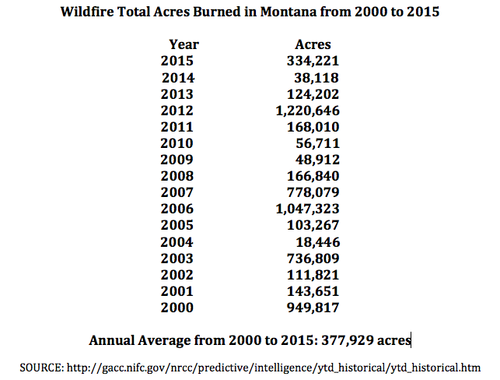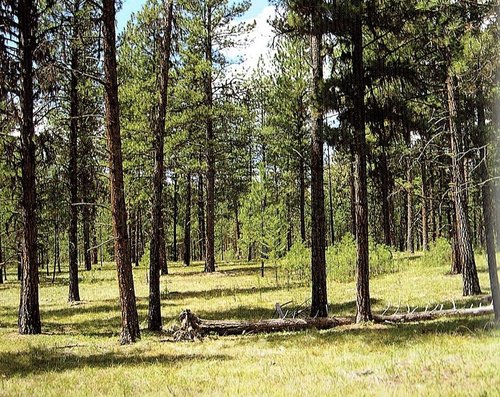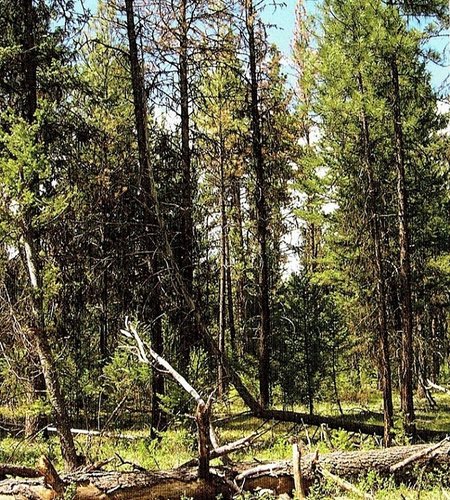Nameless Range
Well-known member
My wife is getting her tonsils out and I have work off to take care of her, so I had some time to write up some thoughts I've recently had on wildfire. We recently listened to The Big Burn on audiobook. I wanted her to hear the story and she enjoyed it.
The old "history repeats itself" paradigm has been on my mind lately. In the years following 1910, those opponents of what are today our public lands desperately tried to use the firestorm and loss of life that ensued as an argument against the existence of public lands. They used fallacious arguments, as if only that land had been more heavily managed by industry we could've avoided the Big Burn.
We are seeing it today, and I mean literally the same arguments. Unfortunately even in the age of the internet a Big Burn needn't even occur. The Mainstream Media claims a fire season is extraordinarily bad - even when it isn't - and the populace, those opposed to public ownership of public lands, and even some conservation orgs, seem to be convinced that:
1. We just had a fire season that was out of the ordinary
2. We could actually effect the outcomes of wildfire in a meaningful way.
When in actuality, the only things that will mitigate the amount of money and energy we spend on fire in any meaningful way are:
1.Weather/Climate
2. Where we choose to allow people to build houses.
I figured I'd throw some links and thoughts out there. I'm not a fire scientist, just a guy with some observations.
A. The fire season we just had, and seasons we have had recently, are not out of the ordinary.
You read the paper in Montana and you'd think the sky is falling. "Second worst fire season in a decade!", "Fires are out of control" etc. Nevermind the fact that the last decade is not a good metric for determining fire trends. The fire season we just had in Montana was intense during the month of August, but was not out of the ordinary. Even for the last decade or so.

The same case can be made nationwide when we look at the past century, though it is difficult to quantify due to the fact so much development has occurred in historically forested areas that are no longer forested or even wild. Combine that with the fact that we now suppress many fires before they get out of the gate. It's complicated. Consider though, about 9 million acres burned in the United States this summer. 6 million of that was in Alaska. For context keep in mind that the Big Burn was 3 million acres itself - as much as the entire lower 48 combined this summer. We are not seeing an increase in high-severity fires compared to historical averages.
B. Reducing Wildland Fuels (logging) will probably not reduce the amount of acres burned in a meaningful way
There is a crapload of scientific study out there on this subject, many of the conclusions mixed. There is evidence that reducing fuels can help protect structures when it is performed in proximity to those structures. There is a thought that fuel reduction will make initial attack safer as well, or reduce the potential spread of certain types of fire. The proclamation that logging will reduce wildfire sure seems moot right now though, doesn't it? Two mills just closed in Montana and the expiration of the Softwood Tariff is on it's way. They didn't close due to a lack of timber. You simply cannot mandate the market. Every land manager out there looking at doing a fuels reduction project is now faced with a difficult question:
"Where the hell does the wood go and who the hell is gonna pay for it?"
C. If it's hot and dry, there will be fire in the west
Climate, and more specifically weather in a given season, dictates wildland fire acreage exponentially more than fuels. Whether it is cheat grass, timber, tundra, or chapparal, if it is hot, dry, and the wind is blowing, there will be fire - and acreage will be similar. People can debate whether climate change is human caused, they can even debate whether our "warming" is extraordinary when viewed in geologic time. There is no arguing however, that it is extraordinarily warm in terms of the history of this country right now.
D. As long as people continue to expand into the wildland urban interface (WUI) , we will continue to spend more money and energy on fire.
Growth plans are viewed as tools of communism in the west, and those same county commissioners who approved minor subdivision x on the south slope of Mountain Y are those same bastards whining about fire, its costs, and the management of timber. Over and Over again. The USDA released this last month. Basically, fires near houses are expensive, more frequent, and dangerous for firefighters. Development in the WUI is one of the chief drivers of the increase in wildland firefighting costs.
I'm not opposed to logging or more active management. Though, Americans need to accept that it will be expensive and will not solve the problem of fire in the west. The arguments out there don't jive with the facts. Go to the American Land Council's twitter or Facebook, and you'll see the exact same argument against public lands we saw in 1910. The same goes for legislation, newspaper headlines, and clickbait. I watched my own governor nod his head last week while these arguments were parroted by an anti-public lands bureaucrat in Washington DC. Bugged the chit out of me. Hysteria sells, and it seems that for some, Wildland Hysteria is becoming a cash-cow, and I am concerned about what will happen when a Our Own Big Burn occurs. What will the hysteria be like then?
The old "history repeats itself" paradigm has been on my mind lately. In the years following 1910, those opponents of what are today our public lands desperately tried to use the firestorm and loss of life that ensued as an argument against the existence of public lands. They used fallacious arguments, as if only that land had been more heavily managed by industry we could've avoided the Big Burn.
We are seeing it today, and I mean literally the same arguments. Unfortunately even in the age of the internet a Big Burn needn't even occur. The Mainstream Media claims a fire season is extraordinarily bad - even when it isn't - and the populace, those opposed to public ownership of public lands, and even some conservation orgs, seem to be convinced that:
1. We just had a fire season that was out of the ordinary
2. We could actually effect the outcomes of wildfire in a meaningful way.
When in actuality, the only things that will mitigate the amount of money and energy we spend on fire in any meaningful way are:
1.Weather/Climate
2. Where we choose to allow people to build houses.
I figured I'd throw some links and thoughts out there. I'm not a fire scientist, just a guy with some observations.
A. The fire season we just had, and seasons we have had recently, are not out of the ordinary.
You read the paper in Montana and you'd think the sky is falling. "Second worst fire season in a decade!", "Fires are out of control" etc. Nevermind the fact that the last decade is not a good metric for determining fire trends. The fire season we just had in Montana was intense during the month of August, but was not out of the ordinary. Even for the last decade or so.

The same case can be made nationwide when we look at the past century, though it is difficult to quantify due to the fact so much development has occurred in historically forested areas that are no longer forested or even wild. Combine that with the fact that we now suppress many fires before they get out of the gate. It's complicated. Consider though, about 9 million acres burned in the United States this summer. 6 million of that was in Alaska. For context keep in mind that the Big Burn was 3 million acres itself - as much as the entire lower 48 combined this summer. We are not seeing an increase in high-severity fires compared to historical averages.
B. Reducing Wildland Fuels (logging) will probably not reduce the amount of acres burned in a meaningful way
There is a crapload of scientific study out there on this subject, many of the conclusions mixed. There is evidence that reducing fuels can help protect structures when it is performed in proximity to those structures. There is a thought that fuel reduction will make initial attack safer as well, or reduce the potential spread of certain types of fire. The proclamation that logging will reduce wildfire sure seems moot right now though, doesn't it? Two mills just closed in Montana and the expiration of the Softwood Tariff is on it's way. They didn't close due to a lack of timber. You simply cannot mandate the market. Every land manager out there looking at doing a fuels reduction project is now faced with a difficult question:
"Where the hell does the wood go and who the hell is gonna pay for it?"
C. If it's hot and dry, there will be fire in the west
Climate, and more specifically weather in a given season, dictates wildland fire acreage exponentially more than fuels. Whether it is cheat grass, timber, tundra, or chapparal, if it is hot, dry, and the wind is blowing, there will be fire - and acreage will be similar. People can debate whether climate change is human caused, they can even debate whether our "warming" is extraordinary when viewed in geologic time. There is no arguing however, that it is extraordinarily warm in terms of the history of this country right now.
D. As long as people continue to expand into the wildland urban interface (WUI) , we will continue to spend more money and energy on fire.
Growth plans are viewed as tools of communism in the west, and those same county commissioners who approved minor subdivision x on the south slope of Mountain Y are those same bastards whining about fire, its costs, and the management of timber. Over and Over again. The USDA released this last month. Basically, fires near houses are expensive, more frequent, and dangerous for firefighters. Development in the WUI is one of the chief drivers of the increase in wildland firefighting costs.
I'm not opposed to logging or more active management. Though, Americans need to accept that it will be expensive and will not solve the problem of fire in the west. The arguments out there don't jive with the facts. Go to the American Land Council's twitter or Facebook, and you'll see the exact same argument against public lands we saw in 1910. The same goes for legislation, newspaper headlines, and clickbait. I watched my own governor nod his head last week while these arguments were parroted by an anti-public lands bureaucrat in Washington DC. Bugged the chit out of me. Hysteria sells, and it seems that for some, Wildland Hysteria is becoming a cash-cow, and I am concerned about what will happen when a Our Own Big Burn occurs. What will the hysteria be like then?






